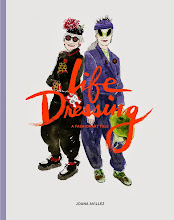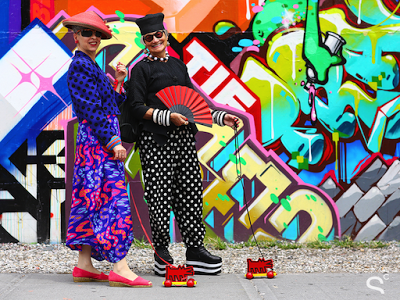
Jean called me one Wednesday night early this year, adamant that I visit one of her favorite thrift shops. Knowing my love of felt, she wanted me to see a felt bag put out for sale with a marvelous “sea creature” on it. I was reluctant. Partly, I thought, what’s wonderful for one person is not always wonderful for another. What if I didn’t like it? I would have made a long trip for nothing, and I would have to sheepishly confess to my very dear friend that it didn’t catch my fancy as it had caught hers. Partly I thought that by the time I got there it would be gone. And finally I thought I didn’t want yet another bag. I must have a dozen lovely bags, most of which I have consigned to the closet. I live now with one of two bags, both black, lightweight, foldable, with a million useful pockets, and compatible with almost everything. Heaven for women who hate always forgetting something in “the other bag”.
She called me Thursday night. Had I seen it? No. She called me Friday night. Had I seen it? No. So, more guilt-ridden than enthusiastic, Saturday I went out to see it, thinking for sure that it would be gone. But how could I not follow my friend’s advice when she was so excited on my behalf?
It took me about 15 minutes to find the bag (although it was exactly where she said it would be). It was black felt, about one foot square, with a felt shoulder strap and a small tuft of deep blue Mongolian lamb's fur at each end of the strap. One side was decorated with the sea creature, which was sewn on with a few stitches. To some extent I was amazed that it was still there, because it truly was fabulous. But then again one could see how it didn’t fit into most consumer categories. It was not a Coach or a Judith Leiber, not Hermes or Chanel or the legendary Birkin bag. And the sea creature Jean referred to was an octopus, so faithfully rendered that although it didn’t have eyes or a beak (because the maker envisioned it from behind???), it did have a very realistic crease in its baggy round head. How many women compete to have an octopus bag? Knowing fully well that this one foot square thing with no pockets would never do as a bag, I nevertheless took it home, intent on doing something with the octopus.
On arriving home, I went through my collection of hats and found one that I had bought disassembled at the now defunct dollar flea market in Chelsea. It consisted of a black felt 1950s juliet cap, and black felt discs with pinked edges, about the size of silver dollars, strung on a long wire covered in the same black felt. I had never managed to put it back together in its original form, and it seemed destined never to be worn.
I got out my sewing box, and cut the octopus away from the bag. Then I put the juliet cap on my head, and juxtaposed the octopus against it this way and that to see whether the combination would work. In less than a minute I had it arranged so that the head looked like a brooch, and its tentacles looked like feathers springing from the brooch. I used a few needles to hold everything in place, took it off my head, and sewed the octopus to the cap with three or four basting stitches. In no more than five minutes the whole operation was complete.
The following day Jean and I had a date to see the Valentina exhibition at The Museum of the City of New York, and I wore the hat there (see the photo below), to show her the results of her sharp eye and astute advice.
In this photo, Valerie is wearing the octopus hat, multicolored and shibori'd Issey Miyake shirt and pants, spring green Uniqlo stockings cut and worn as sleeves, and apparently no shoes.
Jean is wearing a vintage grey felt "toy" hat from the 1940s, silver Donna Karan silk parachute pants, light grey modal DKNY top, black Calvin Klein T-shirt and "charm" necklace, and also appears to have neglected to wear shoes.
The fabulous photo of the real blue ringed octopus is from www.blueboard.com/mantis.
The octopus hat later appeared in the New York Times Style section.
Do Try This at Home: Other Hat Projects
Because many people have an irrational fear of hats (also known by its improbable taxonomic name, cocklaphobia), we thought we'd show our readers several other hats we created out of this and that, and previous incarnations of other hats.
Here is a detail of the hat showing the dog and the knotted ribbon.
But let's not be too quick to dismiss tchotchkes for hats. There is an old and revered tradition of just that. The milliner best known for the use of tchotchkes was Chicago’s Bes-Ben, during the heyday of hats. In fact, one of the most expensive hats ever sold at auction was a Bes-Ben creation. (See the link above for details.)
This is Strawberry's version of the Afghan hat, a shapeless fulled wool tube, usually rolled at the end to form a brim, bringing the crown of the hat very close to the head. By folding the tube once, instead of rolling it, the hat becomes tall and slim instead of low and wide. Added to the hat is a brooch made of alternating black and gray felt squares, layered and cut in ever smaller sizes, to form a pyramid (made by Danielle Gori-Montanelli), adding a bit of flavor, fun and mystery to an otherwise very simple form.
Jean says:
For the Fifth Avenue Easter Parade last April, I improvised by embellishing a black nylon and elastane Titan athletic skull cap from Duane Reade (originally designed for football players to wear under their helmets). After reinforcing a 3" diameter circle with nail polish on the inside (to prevent runs) and allowing it to dry, I cut a hole and inserted a 7" tall metallic green paper vase through the hole, so that the vase would appear to protrude from the top of my skull. The vase's 3 1/2" diameter plastic base was secured in place by the stretchy fabric of the skull cap. From the vase sprouted a fountain of 8" strands of multi-colored colored mylar flowers topped by silver strips, lavender Easter eggs, and pink bunnies.
Paired with a Norma Kamali 80's leopard jacket, the hat beautifully survived numerous wind gusts and post-parade cocktails at the restaurant at MOMA. Total cost (excluding nail polish) was $9.00. Judge the results for yourself here. (Click on photos to enlarge.) For details on Easter outfits and hats worn by Shiho, Valerie and me, please see our blog entry entitled "Stalking the Wild Bill".
Speaking of hats, November 18th marks the St. Catherine's Day Fete of the Milliners Guild. St. Catherine is the patron saint of milliners, and the Milliners Guild will be sponsoring a hat walk which will depart from the Milliners District Synagogue. If you have an interest in hats, this is the ideal place for you to meet like-minded people and see some wonderful creations. For more information, click here.
If you get started now, you can have a hat of your own to wear to the festivities.




